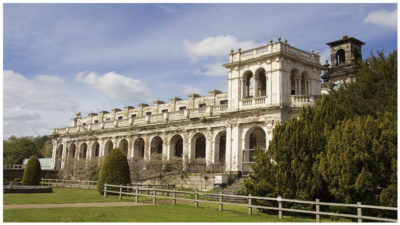Lancelot “Capability” Brown (1716-1783), also known as “England’s greatest gardener,” was a renowned landscape architect who designed more than 170 gardens, possibly as many as 250 by some accounts, for some of the finest country houses and estates in England.
His legacy is celebrated at the Trentham Estate in Staffordshire, England, where visitors can enjoy exploring some of his “lost landscapes” as well as more modern developments including a garden center and shopping village.
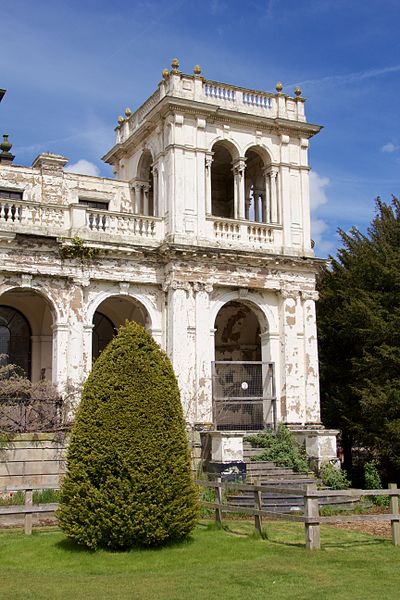
Brown cultivated the formal gardens, woods and parkland at Trentham from 1759 to 1780, even diverting the River Trent to create a mile-long lake. Parts of his design were redeveloped in the 1840s, but the whole estate was left to run wild after the main house was abandoned in 1905. The gardens were lovingly resurrected and opened to the public in 2003, and the restoration project is still ongoing.
Of Trentham Hall, the elegant mansion that once stood in the midst of Capability Brown’s parkland and gardens, there is barely any trace.
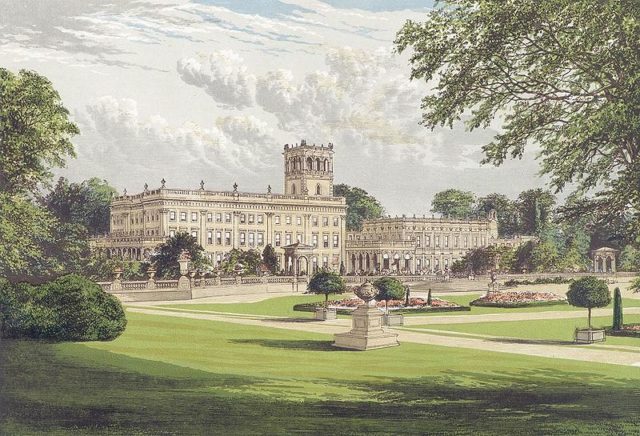
The house itself was demolished in 1912, although a number of buildings within the grounds survived including the mausoleum, the Church of St Mary and All Saints, and several lodges.
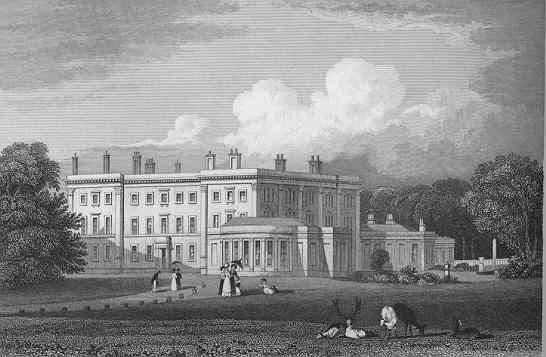
A two story building that once housed the stables, dairy, offices and sculpture gallery remains almost intact, right next to the remaining foundations the Hall. The horseshoe-shaped Italianate portico of the Grand Entrance and orangery is also still standing — for now.
Planning permission for the structure, which is listed on Historic English’s Heritage at Risk Register, to be turned into a conference center was granted in 2013, but developers St. Mowden balked at the huge cost of renovation. There is still no sign that the ruin will be restored.
The decaying remains of Trentham Hall make a stark contrast to the well tended Italian Gardens that thousands of visitors come to see every year.
The earliest record of the Trentham Estate is in the Doomsday Book — William the Conqueror’s “Great Survey” of England which was completed in 1086. At that time it was a royal manor, and the Church of St Mary and All Saints incorporated a nunnery.
An Augustinian priory flourished on the site from the 12th century until it was disbanded in 1538, during Henry VIII’s Dissolution of the Monasteries.
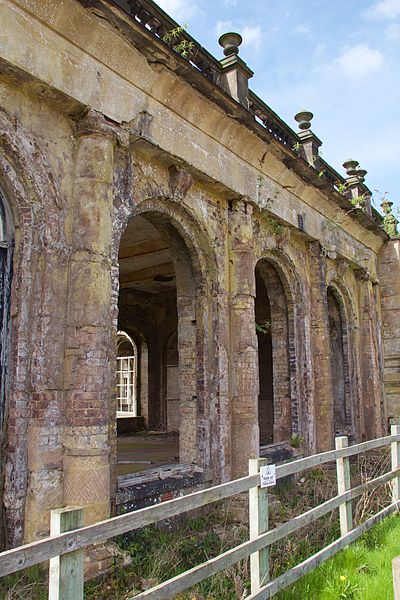
A wool merchant named James Leveson purchased Trentham in 1540. He also snapped up land formerly owned by three other priories, taking full advantage of the opportunity to get a good deal.
Leveson and his descendants did rather well for themselves. The Trentham Estate was where the family chose to show off their wealth and from the other land they made a tidy income. The first known plans for a manor house were drawn up in 1599, although another may have existed before it.
The mansion is demolished and rebuilt from scratch during the 1630s by Sir Richard Leveson, who included walled gardens and an orchard in the new design.
Through the marriage of Frances Leveson and Sir Thomas Gower, 2nd Baronet, in 1668, Trentham becomes part of the estate of a powerful family who slowly move up the ladder of nobility. From this point forward, the house undergoes renovation after renovation, and the gardens become extensive.
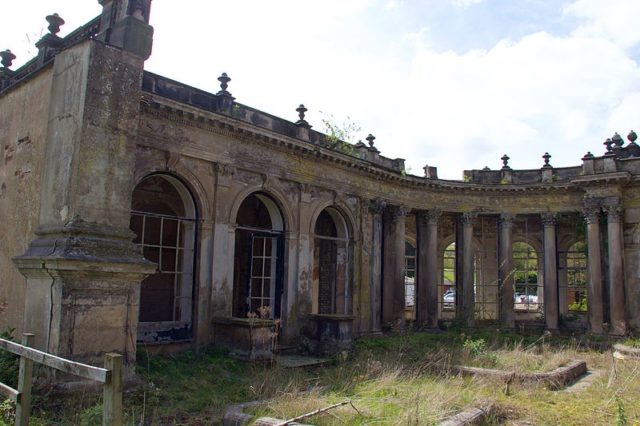
Perhaps to reflect his new status, after receiving the title 1st Baron Gower of Stittenham, John Leveson-Gower instigates the first of these in 1707, demanding that his Hall be built “both larger, higher, and handsomer than it was before.” It is remodeled in the style of Buckingham Palace.
The area still known today as the Kings Wood was marked out by John’s son during a continuation of his father’s expansion plans.
Trentham’s gardens were given their extensive makeover by Capability Brown during the time of Granville Leveson-Gower, 2nd Earl Gower (and later Marquess of Stafford).
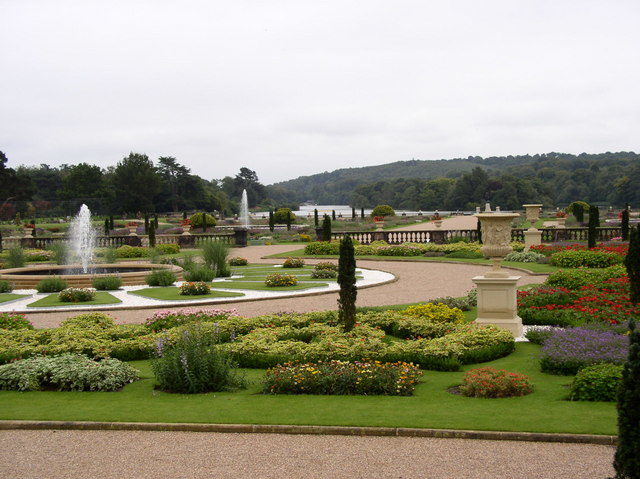
In it’s final incarnation, much of Trentham House is rebuilt, remodeled, or extended. The work was commissioned by George Granville Sutherland-Leveson-Gower, 2nd Duke of Sutherland (who also had the option to add the titles Viscount Trentham and Marquess of Stafford to his business card).
Architect Charles Barry was commissioned to turn Trentham Hall into and Italianate palace, which he did from 1833 to 1842. Barry is also credited with creating the Italian gardens, although this was actually a collaboration with the head gardener.
Increasing industrialization and run-off from the nearby potteries spelled the end for Trentham Hall. Pollution in the River Trent, and hence the estate’s showpiece lake and fountains, reached an unbearable level. Slimy, stinking sewage clogged the waters from the 1870s.
The family couldn’t take any more. They tried to give the property to the local council, but were refused — so Cromartie Sutherland-Leveson-Gower called in a building firm to demolish his family’s once-prized Trentham Hall. That was a guy who really knew how to throw a tantrum.
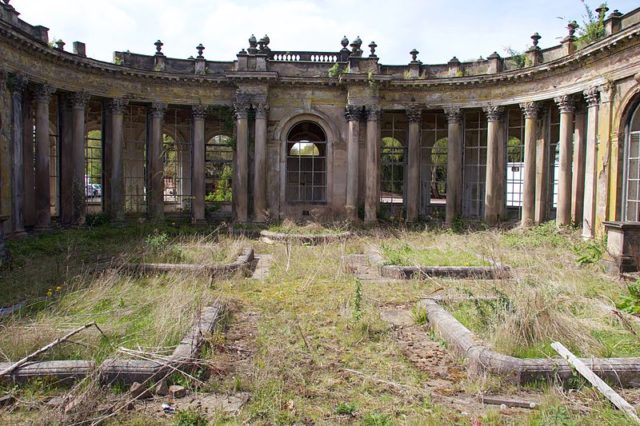
A corner of the estate was turned into a golf club, and the gardens grew to be a well loved public space. During the 1930s a Ballroom was built on the former kitchen gardens, and an outdoor swimming pool installed next to the lake. Trentham Ballroom was a favorite community venue right through until 2002.
Today the gardens are a popular visitor attraction. The huge estate even has a 60 acre monkey sanctuary.
